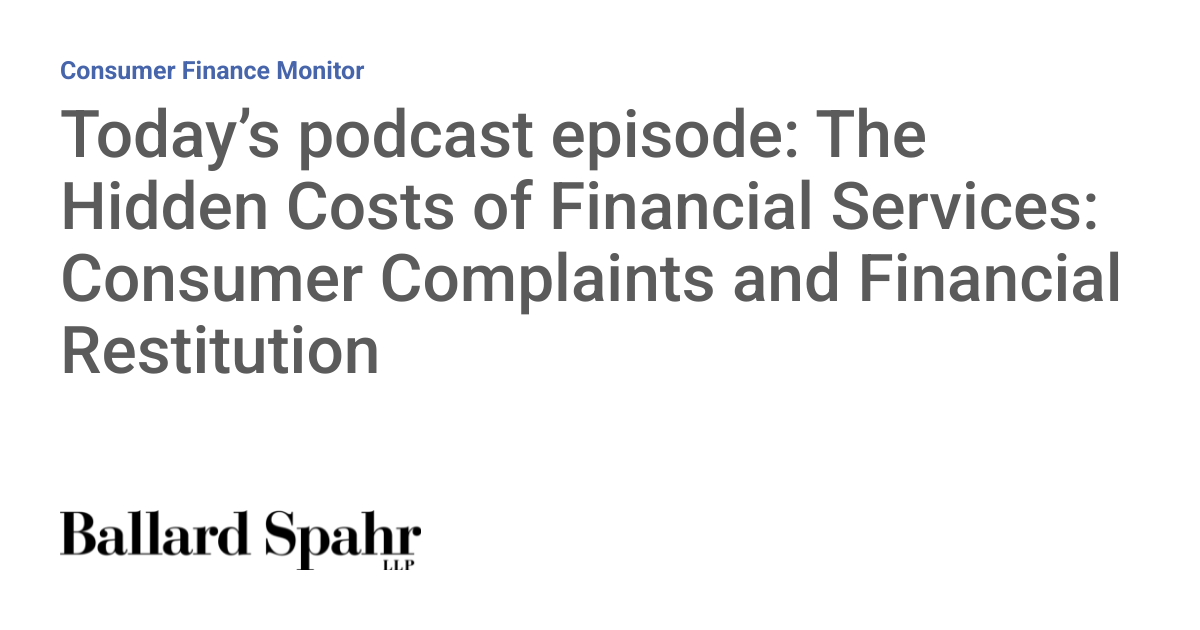
Today’s podcast episode: The Hidden Costs of Financial Services: Consumer Complaints and Financial Restitution
How did your country report this? Share your view in the comments.
Diverging Reports Breakdown
Today’s podcast episode: The Hidden Costs of Financial Services: Consumer Complaints and Financial Restitution
The CFPB authorized outside third-parties access to non-public data collected about consumer complaints that it received. Professors Haendler and Heimer used that data to determine the demographics of complainants who received the most restitution. They found little evidence that differences across firms systematically drive restitution outcomes. Instead, product complexity and consumer engagement play key roles, they said. The study highlights the negotiating power of the consumer in disputes, and how this negotiating power hinges on self-advocacy and financial sophistication. It could also be a wakeup call to consider how certain demographics might be struggling to understand the financial product offered and how to cater to them to reach a greater customer base and higher levels of consumer satisfaction.Alan Kaplinsky, founder and former Chair and now Senior Counsel of the Consumer Services Group hosted this episode of the SSRN podcast show. To listen to this episode, click here.
The study they conducted is described in the abstract of the article which is available here on SSRN:
Financial disputes are a widespread but understudied feature of consumer financial markets. Using confidential data from the Consumer Financial Protection Bureau (CFPB), we analyze nearly two million consumer complaints filed since 2014, which have led to an average payout of $1,470 per successful complaint. The volume of complaints and total restitution have increased substantially over time, suggesting significant scope for additional compensation. When understanding who secures restitution—and why—we find little evidence that differences across firms systematically drive restitution outcomes. Instead, product complexity and consumer engagement play key roles—consumers with higher income and education (high-SES) are more likely to explicitly request refunds, claim fraud, and submit supporting documentation, making firms more responsive. Leveraging previously unexamined CFPB monitoring reviews, where the agency systematically screens company responses and issues confidential reports highlighting deficiencies, we show that regulatory scrutiny increases restitution but disproportionately benefits high-SES consumers, reinforcing individual-specific mechanisms. Our results highlight the complementary nature of regulatory interventions and suggest that financial sophistication and self-advocacy are critical determinants of consumer redress.
During the webinar, the Professors answered the following questions:
Why did you conduct an in-depth CFPB consumer complaints study in the first place? Why did you basically use the CFPB complaint data as a proxy for consumer disputes in the entire industry? In your paper you mostly focus on the likelihood of a complaint resulting in financial restitution (i.e., some sort of monetary relief for the troubles endured). The title of your paper is “The hidden costs of financial services: consumer complaints and financial restitution”. First of all, what do you mean by hidden costs? Was the confidential data you received from the CFPB essential in better understanding the mechanisms behind the resolution of these consumer disputes? Did you find differences in complaint outcomes depending on the type of product involved? Is there a lot of variation across companies in the likelihood to award financial restitution to a complainant? Is the likelihood of a complainant receiving restitution more about the complexity of the product and potentially how the consumer relates to it than about there being some rogue companies? Do certain consumer characteristics—like income, education, and even racial and ethnic background—correlate with greater likelihood of financial restitution. How do consumer characteristics end up influencing the likelihood of restitution? Does oversight from the CFPB change how firms handle disputes and award financial restitution? What should regulators, firms, and consumers take away from this research?
This is how they answered that question:
It is critical to recognize that the capabilities to navigate the dispute process aren’t equal across consumers. For regulators, we see that scrutiny and nudging alone do not substitute for consumer engagement. Hence the challenge is to design systems that help level the playing field, perhaps by educating the consumer more, or by flagging poorly-articulated but potentially valid complaints for extra review and documentation. For companies, this study highlights the negotiating power of the consumer in disputes, and how this negotiating power hinges on self-advocacy and financial sophistication. It could also be a wakeup call to consider how certain demographics might be struggling to understand the financial product offered and how to cater to them to reach a greater customer base and higher levels of consumer satisfaction. For consumers, it’s a reminder that being specific, using strong language, and submitting documentation really matters in getting your voice heard.
Alan Kaplinsky, founder and former Chair and now Senior Counsel of the Consumer Financial Services Group hosted this podcast show.
To listen to this episode, click here.
